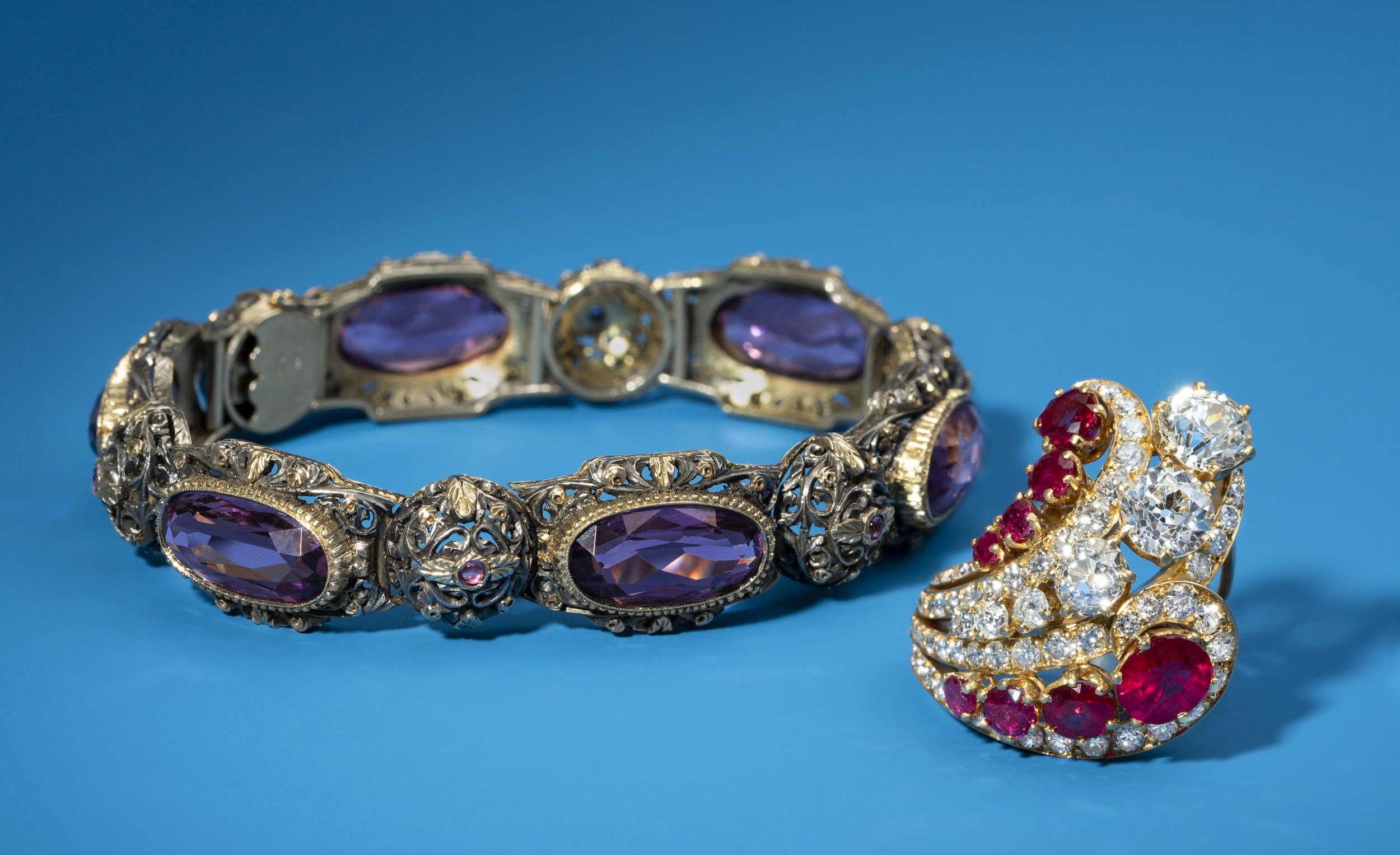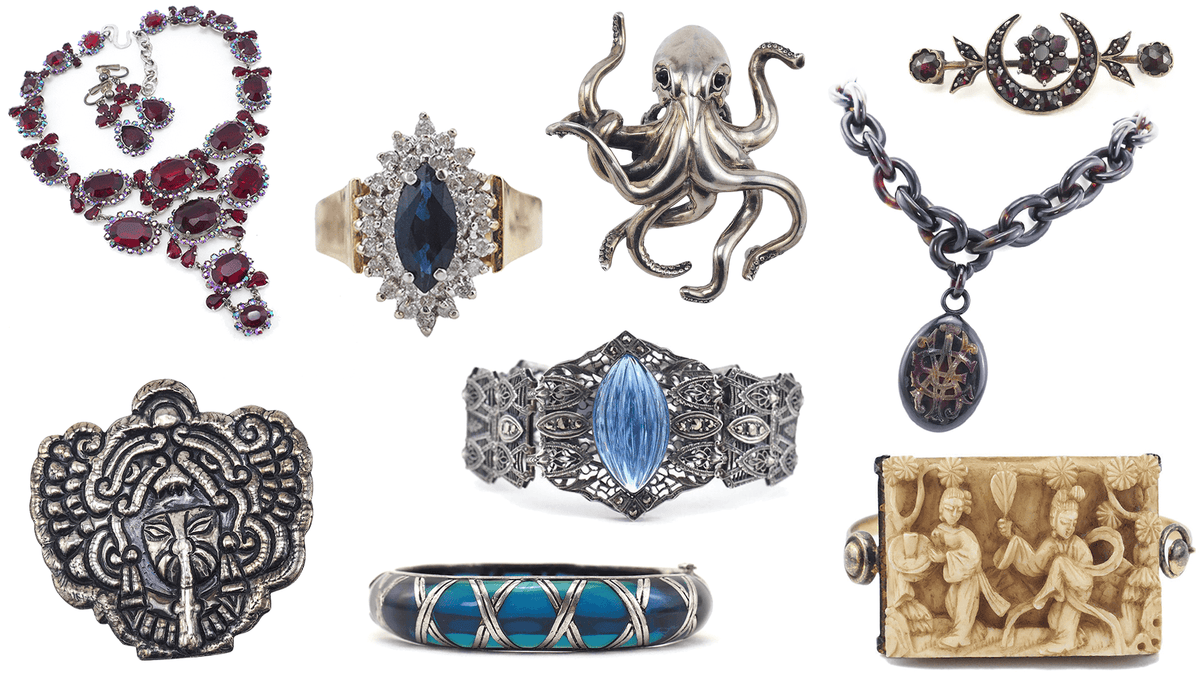Uncover the Rich History Behind Stunning Estate Jewelry Collections
The exploration of estate precious jewelry collections uses an one-of-a-kind home window into history, disclosing the complex connection between workmanship and social development. What secrets might these collections still hold?
The Beginnings of Estate Precious Jewelry
Exactly how did estate jewelry involved personify the rich background and virtuosity of past eras? The beginnings of estate fashion jewelry can be mapped back to various durations of workmanship, where jewelry was not just an accessory but a representation of societal values, technical innovations, and imaginative expressions. Each piece informs a tale, frequently connected with the lives of their previous proprietors, encapsulating individual narratives along with historic contexts.
The term "estate jewelry" usually describes used pieces, usually from significant ages such as Victorian, Art Nouveau, or Art Deco. These items were created with careful attention to information, showcasing the skill of artisans that made use of materials like gold, silver, and precious gemstones. Unlike modern jewelry, estate pieces usually include distinct styles that highlight the appearances of their time, thus serving as substantial web links to the past.

Noteworthy Design Ages
Throughout background, a number of noteworthy design eras have actually dramatically affected the development of estate fashion jewelry, each defined by distinct styles, products, and cultural contexts. The Georgian era (1714-1837) noted the start of elaborate designs, often including nature-inspired concepts and making use of materials like gold, silver, and gems embeded in fancy setups. Following this, the Victorian period (1837-1901) introduced romantic motifs, with emotional jewelry and cutting-edge methods such as using enamel and cameos.
The Art Nouveau duration (1890-1910) celebrated organic types and the charm of nature, making use of products like opals and pearls in flowing layouts. This was been successful by the Art Deco era (1920-1939), which welcomed geometric patterns, strong shades, and extravagant materials such as platinum and rubies, reflecting the modernist spirit of the moment.
The Mid-Century Modern era (1940-1960) showcased structured designs and the usage of non-traditional products, highlighting minimalism and functionality. Each of these ages not just shows the imaginative motions of their time yet likewise envelops the societal worths and technical improvements that formed precious jewelry layout, making them a fascinating subject for enthusiasts and historians alike.

Famous Estate Precious Jewelry Collections
The abundant background of estate jewelry is magnificently exhibited by several distinguished collections that display the artistry and craftsmanship from different layout eras. One of one of the most famous is the Cartier Collection, which shows the deluxe and innovation of the renowned French jeweler. Parts from this collection usually feature splendid gems and detailed layouts, highlighting the brand's commitment to fine craftsmanship.
One more notable collection is the Duchess of Windsor's jewelry collection, which makes up a number of unique pieces, consisting of the legendary "Windsor" bracelet. This collection not just exemplifies the beauty of the Art Deco period however likewise brings a rich story of love and loss, as it belonged to Wallis Simpson, who notoriously wed Edward VIII.
The collection of the late starlet Elizabeth Taylor additionally attracts attention in the world of estate precious jewelry. With countless items designed by renowned jewelry experts like Bulgari and Cartier, her collection personifies prestige and class, highlighting her personal style and affinity for unique gems.
These renowned estate fashion find out jewelry collections serve as a testament to the long-lasting appeal of fine jewelry, providing insight right into the social and creative motions that shaped their production.
The Social Relevance
Estate fashion jewelry collections hold profound social relevance, reflecting not just the visual values of their corresponding periods however also the social and historic contexts in which they were created. Each item typically embodies the workmanship and creative trends of its time, showcasing the advancement of style and technology in jewelry production.
Furthermore, these collections work as concrete links to social practices and rituals. As an example, wedding bands and treasure brooches may signify love and domestic bonds, while pieces decorated with specific gems can represent cultural or regional identities. The materials utilized-- whether gold, silver, or gemstones-- typically inform stories of profession, expedition, and the wealth build-up of cultures.
Additionally, estate jewelry can function as historical artefacts, giving understandings into the lives of individuals and the social standards they browsed. The way fashion jewelry was put on and valued can reveal much about gender functions, standing, and individual expression within varying cultural landscapes. Estate precious jewelry goes beyond plain embellishment, acting as an abundant narrative of human experience, virtuosity, and social heritage, welcoming see this modern target markets to involve with the past in a purposeful means.
Taking Care Of Your Estate Parts
Looking after estate precious jewelry items calls for a thoughtful approach to guarantee their long life and maintain their one-of-a-kind features. To keep the charm of these treasures, it is important to handle them with care. Always tidy estate precious jewelry making use of a soft, lint-free towel after each wear to get rid of oils and dust. For much deeper cleaning, use a mild soap remedy and a soft brush, taking treatment to prevent extreme chemicals that may damage delicate products.
Storage space is similarly vital; shop pieces independently in a fabric-lined box to stop scraping and entangling. Consider utilizing anti-tarnish bags or cloths for silver things, as this assists to reduce the tainting process. Furthermore, prevent revealing precious jewelry to extreme moisture, severe temperatures, or straight sunlight, which can detrimentally impact steels and gemstones.
Normal assessments are essential. Look for loose rocks, worn holds, or damaged setups, and seek expert repairs when required. Consulting a jewelry expert experienced in vintage or antique pieces can supply specialized treatment options. By carrying out these practices, collection agencies can maintain their estate jewelry's visual and historic value, making sure these items continue to be treasured for generations ahead.
Final Thought
Finally, the exploration of estate jewelry collections exposes a tapestry of imaginative expression and social significance, reflecting the values and looks of numerous historic durations. Each piece works as a testimony to extraordinary workmanship and the narratives of those who as soon as possessed them. Understanding the origins, design ages, and significant collections improves recognition for these artefacts, highlighting their function in protecting cultural heritage and encouraging continued stewardship and take care of these amazing treasures.
The exploration of estate jewelry collections offers an unique home window right into background, exposing the elaborate connection between craftsmanship and social advancement. The origins of estate fashion jewelry can be traced back to numerous durations of craftsmanship, where fashion jewelry was not merely an accessory yet a representation of societal values, technical innovations, and creative expressions.The term "estate jewelry" generally refers to pre-owned items, typically from significant eras such as Victorian, Art Nouveau, or Art Deco.The abundant history of estate precious jewelry is magnificently exemplified by several renowned collections that display the artistry and workmanship best site from different design periods.In conclusion, the expedition of estate fashion jewelry collections reveals a tapestry of imaginative expression and cultural significance, mirroring the values and appearances of different historic periods.